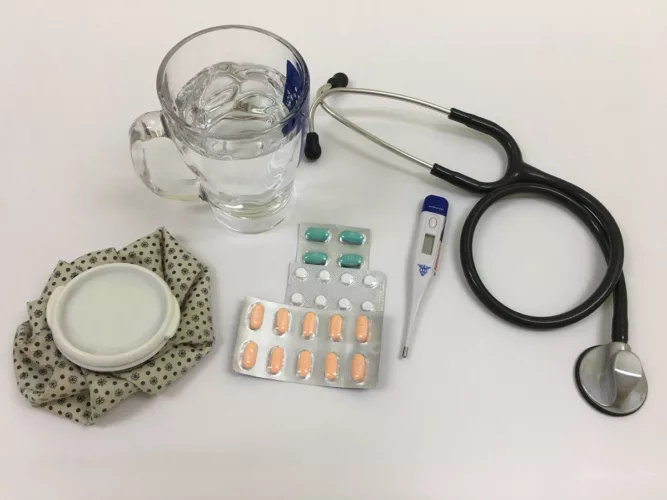Coronavirus Statutory Sick Pay Rebate Scheme Portal & Amendment to SSP Regulations

Employers will be able to make claims through the Coronavirus Statutory Sick Pay Rebate Scheme Portal from 26 May to reclaim SSP paid to current or former employees.
The repayment will cover up to 2 weeks starting from the first qualifying day of sickness, if an employee is unable to work because they either:
- have coronavirus (COVID-19) symptoms
- cannot work because they are self-isolating because someone they live with has symptoms
- are shielding and have a letter from the NHS or a GP telling them to stay at home for at least 12 weeks
The rules state that you can claim for periods of sickness starting on or after:
- 13 March 2020 – if your employee had coronavirus or the symptoms or is self-isolating because someone they live with has symptoms
- 16 April 2020 – if your employee was shielding because of coronavirus
The weekly rate was £94.25 before 6 April 2020 and is now £95.85. If you’re an employer who pays more than the weekly rate of SSP you can only claim up to the weekly rate paid.
Use the SSP calculator (at the link above) to work out the actual amount.
Employees do not have to give you a doctor’s fit note for you to make a claim. But you can ask them to give you either:
- an isolation note from NHS 111 – if they are self-isolating and cannot work because of coronavirus
- the NHS or GP letter telling them to stay at home for at least 12 weeks because they’re at high risk of severe illness from coronavirus
Who can use the scheme
The rules state that you can use the scheme as an employer if:
- you’re claiming for an employee who’s eligible for sick pay due to coronavirus
- you have a PAYE payroll scheme that was created and started on or before 28 February 2020
- you had fewer than 250 employees on 28 February 2020
You can claim back from both the Coronavirus Job Retention Scheme and the Coronavirus Statutory Sick Pay Rebate Scheme for the same employee but not for the same period of time for that employee.
The scheme covers all types of employment contracts, including:
- full-time employees
- part-time employees
- employees on agency contracts
- employees on flexible or zero-hour contracts
- fixed term contracts (until the date their contract ends)
There will be further communication on when the scheme will end.
UPDATE – 28.05.20
Following the Covid-19 outbreak, the SSP Regulations were initially amended so that people who were isolating because either they or a member of their household had symptoms of Covid-19 or they were shielding due to being extremely clinically vulnerable were deemed to be ‘incapable of work’ and therefore entitled to SSP.
In England, this further amendment adds a new category of people, it means if a person has been notified through the new Contact Tracing system (also referred to as Trace and Trace) that they have been in contact with somebody who has Covid-19 symptoms and they must self-isolate for 14 days, they are also deemed ‘incapable of work’ and will be entitled to SSP.
SSP is currently paid at a flat rate of £95.85 for up to 28 weeks in any period of incapacity for work. Eligible employers, namely those with fewer than 250 employees, can also recover up to 2 weeks’ SSP paid to its employees from HMRC.
Connected companies and charities
Connected companies and charities can also use the scheme if their total combined number of PAYE employees was fewer than 250 on the 28 February 2020.
Get ready to claim
The online service you’ll use to reclaim Statutory Sick Pay (SSP) will be available from 26 May 2020.
To use the online service you will need the Government Gateway user ID you got when you registered for PAYE Online. If you did not register online you will need to enrol for the PAYE Online service.
Find your lost Government Gateway user ID if you do not have it.
If you use an agent who is authorised to do PAYE online for you, they will be able to claim on your behalf.
If you’re unable to claim online an alternative way to claim will be available.
What you’ll need
You’ll need:
- your employer PAYE scheme reference number
- contact name and phone number of someone HMRC can contact if we have queries
- UK bank or building society details (only provide bank account details where a Bacs payment can be accepted)
- the total amount of coronavirus SSP you have paid to your employees for the claim period – this should not exceed the weekly rate that is set
- the number of employees you are claiming for
- the start date and end date of the claim period
You can claim for multiple pay periods and employees at the same time. The start date of your claim is the start date of the earliest pay period you’re claiming for. The end date of your claim is the end date of the most recent pay period you’re claiming.
Records you must keep
You must keep records of SSP that you’ve paid and want to claim back from HMRC.
You must keep the following records for 3 years after the date you receive the payment for your claim:
- the dates the employee was off sick
- which of those dates were qualifying days
- the reason they said they were off work – if they had symptoms, someone they lived with had symptoms or they were shielding
- the employee’s National Insurance number
You can choose how you keep records of your employees’ sickness absence. HMRC may need to see these records if there’s a dispute over payment of SSP.
Here’s how you claim
From 26th May, employers will be able to make claims to the Coronavirus Statutory Sick Pay Rebate Scheme through a new online service. Employers will receive repayments at the relevant rate of SSP that they have paid to current or former employees for eligible periods of sickness starting on or after 13 March 2020.
Access our full range of HR guides on the Coronavirus Support Hub
If you have any immediate or urgent issues get in touch with us to discuss your options in these tough and uncertain times.
Essex 01245 410201 | Suffolk 01473 360160 | Norfolk 01603 791256
The content of this article is for general information only. It is not, and should not be taken as, legal advice. If you require any further information in relation to this article please contact us.
There may be occasions where the articles contain links to external websites. We have no control over the nature, content and availability of those sites. The inclusion of such links does imply a recommendation or endorse the views expressed within them.



